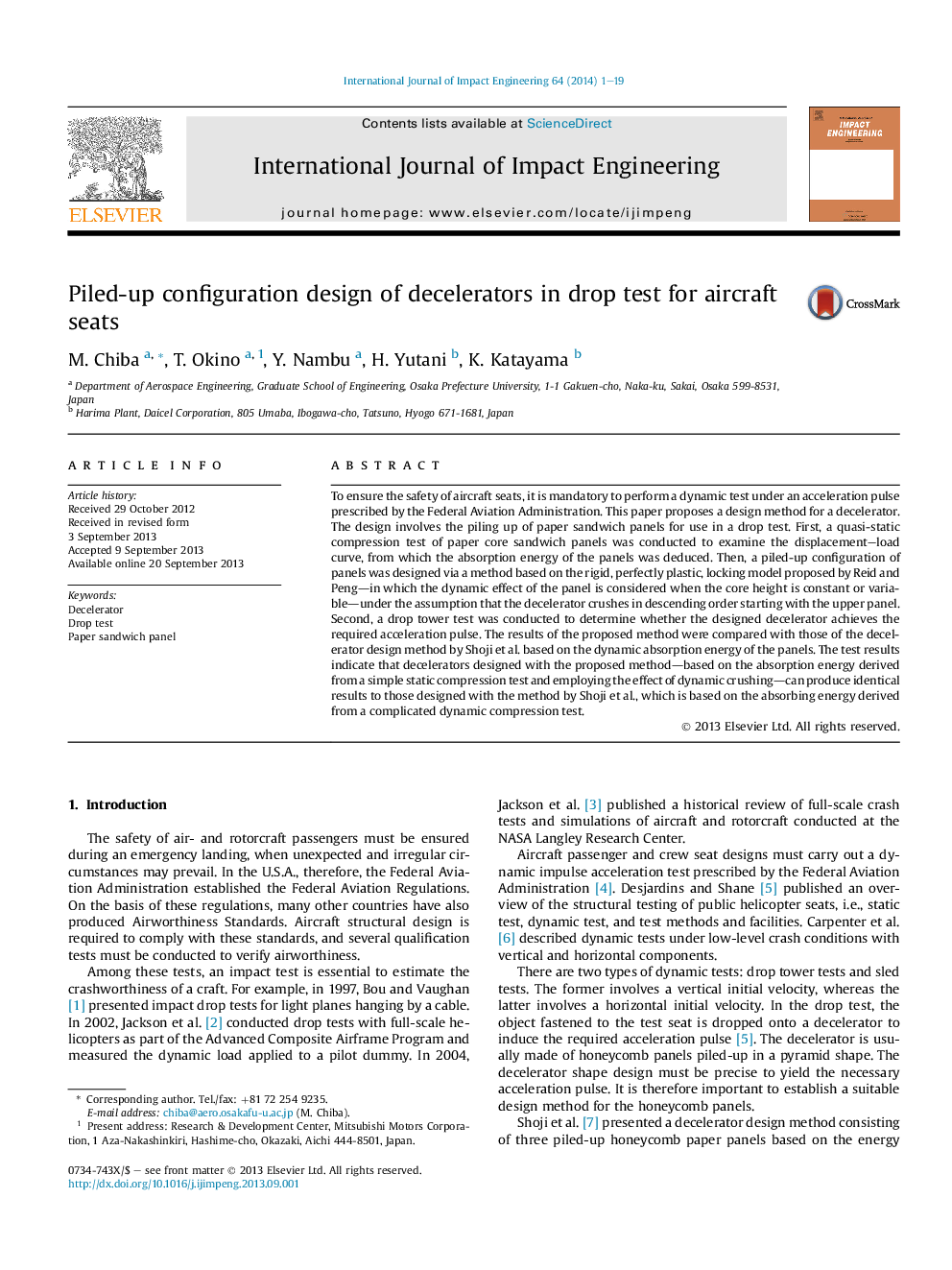| Article ID | Journal | Published Year | Pages | File Type |
|---|---|---|---|---|
| 7173193 | International Journal of Impact Engineering | 2014 | 19 Pages |
Abstract
To ensure the safety of aircraft seats, it is mandatory to perform a dynamic test under an acceleration pulse prescribed by the Federal Aviation Administration. This paper proposes a design method for a decelerator. The design involves the piling up of paper sandwich panels for use in a drop test. First, a quasi-static compression test of paper core sandwich panels was conducted to examine the displacement-load curve, from which the absorption energy of the panels was deduced. Then, a piled-up configuration of panels was designed via a method based on the rigid, perfectly plastic, locking model proposed by Reid and Peng-in which the dynamic effect of the panel is considered when the core height is constant or variable-under the assumption that the decelerator crushes in descending order starting with the upper panel. Second, a drop tower test was conducted to determine whether the designed decelerator achieves the required acceleration pulse. The results of the proposed method were compared with those of the decelerator design method by Shoji et al. based on the dynamic absorption energy of the panels. The test results indicate that decelerators designed with the proposed method-based on the absorption energy derived from a simple static compression test and employing the effect of dynamic crushing-can produce identical results to those designed with the method by Shoji et al., which is based on the absorbing energy derived from a complicated dynamic compression test.
Keywords
Related Topics
Physical Sciences and Engineering
Engineering
Mechanical Engineering
Authors
M. Chiba, T. Okino, Y. Nambu, H. Yutani, K. Katayama,
